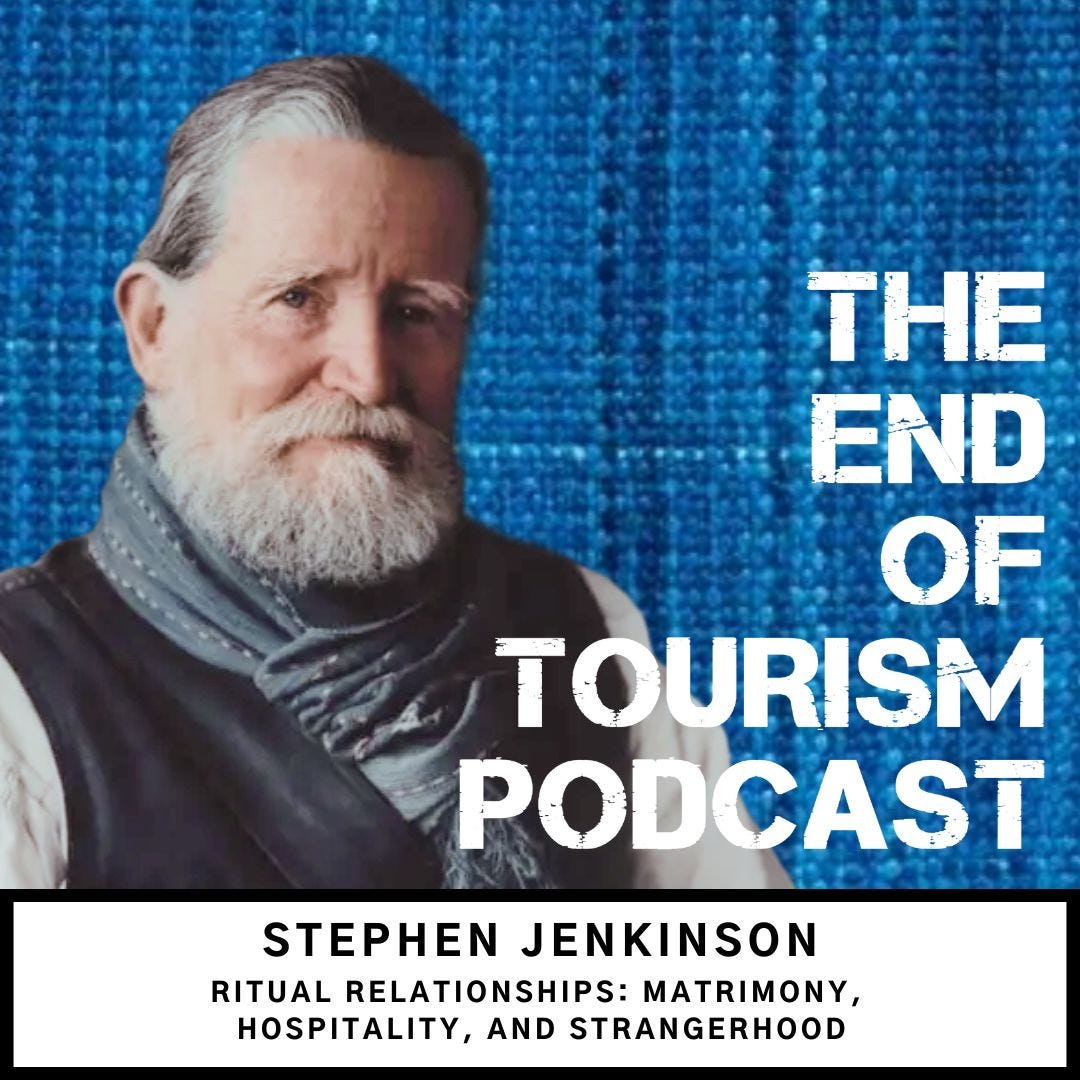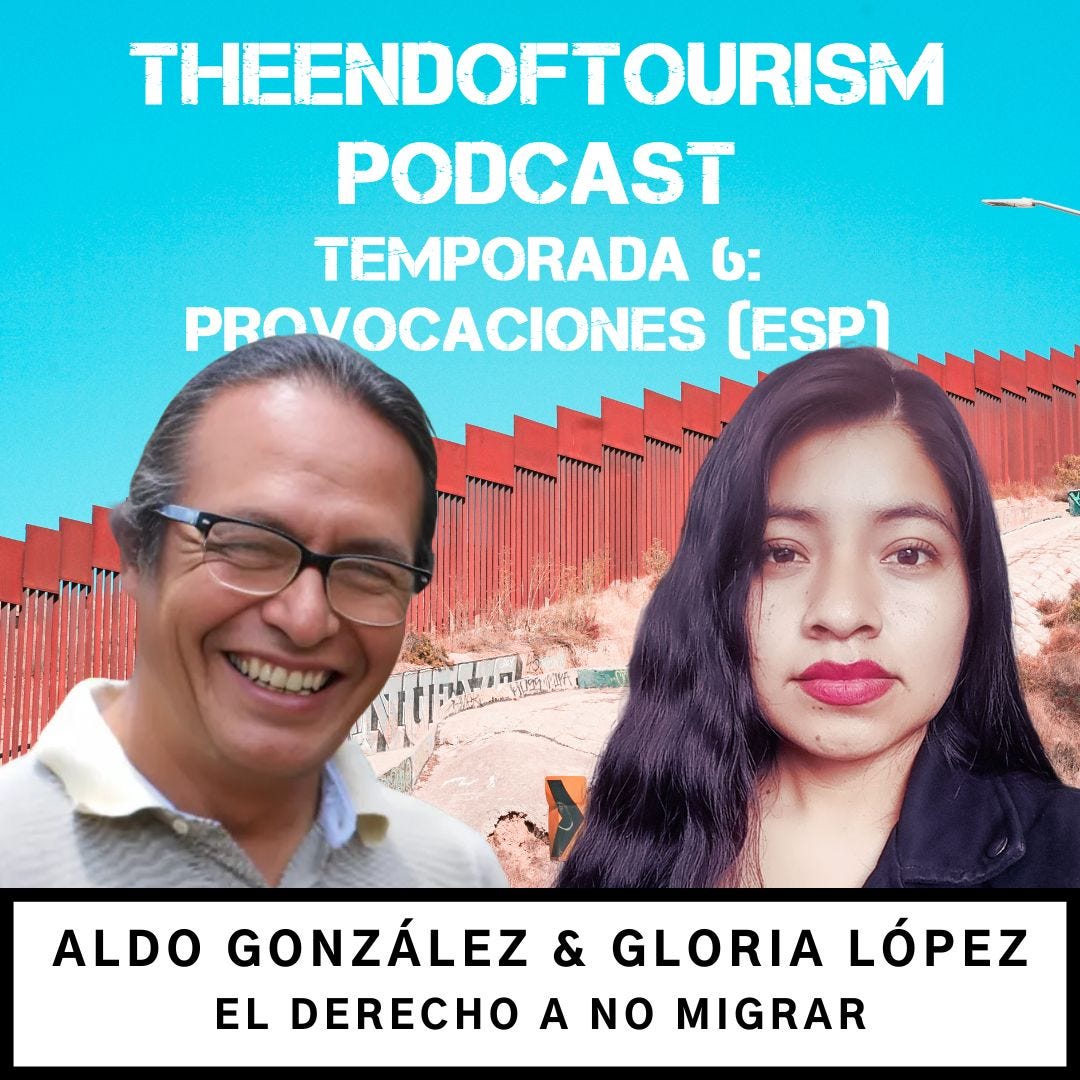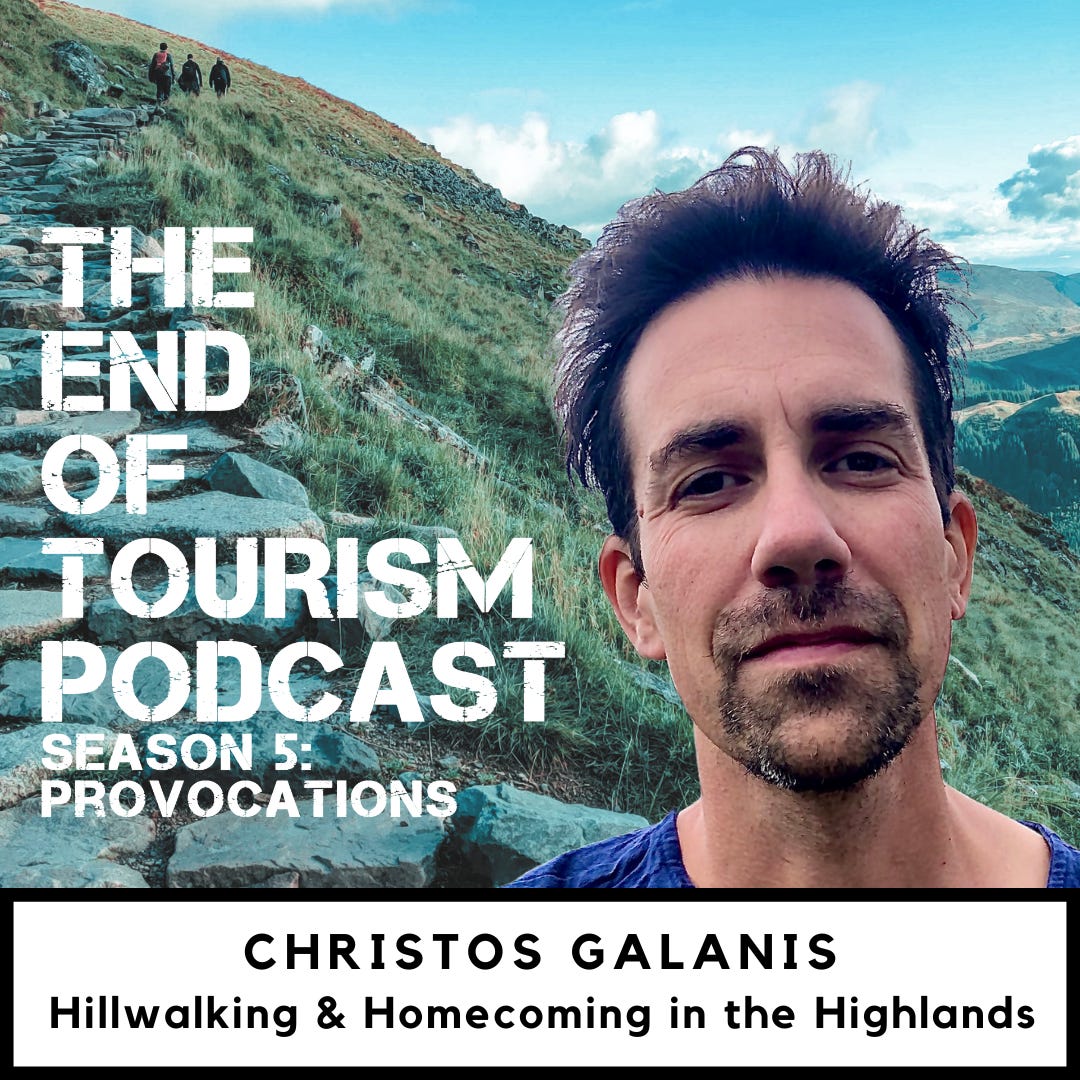S5 #7 | The Dreamwork of Instagram w/ Sean P. Smith
Description
On this episode, my guest is Sean P. Smith, an Assistant Professor in the Department of Culture Studies at Tilburg University in the Netherlands. Much of his research has focused on the relationship between social media and tourism, and how colonial histories shape today’s ideologies and visual cultures of travel. The inequalities that result from many forms of tourism development, he argues, are intimately linked with how tourists create content for Instagram, TikTok, and YouTube, and the ways tourists frame themselves in landscapes and alongside local residents often replay colonial hierarchies.
Show Notes:
Why Study Instagram?
The Pre-tour Narrative (Edward Bruner, Raul Salazar)
The Habitus of Tourism (or How We Got Here)
The Promontory Witness (or that photo)
The Logic of Influence
Emptying the Landscape (John Urry)
The Techno-Generational Divide
Media Ecology
Other Horizons in Oman
Homework:
Sean P. Smith - Tilburg University
Sean P. Smith: Twitter / X | Instagram | Google Scholar (Articles)
Transcript:
Chris: [00:00:00 ] Welcome, Sean, to the pod. Thank you so much for being willing to join us to speak about your work.
Sean: Thanks very much for having me.
Chris: My pleasure. I'm curious, Sean where you're speaking from today and, and how the world is, how the world might be housing you there.
Sean: Well, it's very rainy and dark. I'm in the Southern Netherlands, an area called North Brebant, where I just moved less than a month ago.
So, in many places of moving around, if so, getting used to this one.
Chris: Sean, I found out about your work from one of the pod's listeners who sent in a link to one of your academic articles entitled, Instagram Abroad, Performance, Consumption, and Colonial Narrative in Tourism. Now, I've been ruminating on the effect that social media has on tourism, spectacle, surveillance, and cultures of disposability for a long time now.
So I'm really excited to speak with you today. And [00:01:00 ] likewise parts of the podcast are shared via Facebook, Instagram, Twitter, so there's always this sense of kind of feeding the machine. unaware and perhaps more aware each time. And so first then, I'm curious why focus on Instagram in the context of critical tourism studies? What makes it different from say Facebook or Twitter?
Sean: Yeah, that's a really good question Chris. I think with Instagram, in many contexts around the world, certainly not universally, but it's the social media platform that is most readily identified with not just tourism, but the way that people represent themselves engaging in tourism. It's very image driven.
Of course, people do write captions, they do engage in other forms of storytelling, but nowadays it's mostly pictures and especially reels, arguably in the last few years. And for a long time, this [00:02:00 ] has been could almost say the dream work of tourism going back 200, maybe longer years. So even though today, I think you can find forms of tourism well represented TikTok to varying degrees on Facebook.
Instagram, at least in many of the places where I've conducted research, is the place that one goes to both learn about places to travel and also to show how oneself travels.
Chris: And I'm kind of imagining that we're more or less in the same age range, but I'm curious if on your travels, you mentioned just briefly that you had also spent time backpacking as a younger person and I'm curious if Instagram existed at the time and also if this dream work was evident to you in your travels.
Sean: It was. I think I was relatively young when I got my first [00:03:00 ] smartphone, but certainly not as young as people nowadays. I must have been maybe 22 or 23. So I did have some years of traveling before I think Instagram really reshaped the way that tourism is done, not just for people that actually use this app, but regardless of whether or not anyone's ever downloaded it on their phone, I think Instagram has had a significant impact on the way that tourism is done.
So when I first got a smartphone, I was in a period of my life where I was able to travel quite frequently and that was something that I was really pursuing at the time. And Instagram was a way that I was able to engage in a long running interest in photography, but also kind of a diary of where I had been, but certainly one that was legible and sort of visible to other people.
And it was through that, you could say "performance" of travel that began to think a bit more critically about this app and other social media [00:04:00 ] platforms as well. And the way that it was reshaping tourism destinations.
Chris: Mm. Mm. Yeah, you mention in your work this notion of the pre tour narrative.
And I'm wondering if we could unpack that a little bit for our listeners and what part Instagram plays in this pre tour narrative.
Sean: Yeah, I'm very happy to point that out, because I think this is, this is an important way to think about tourism, and that particular phrase I'm drawing on the work of Edward Bruner, who was an American anthropologist.
And that's also been picked up in other realms to be identified as what other people have called tourism imaginaries, such as in the work of Raúl Salazar. So what this concept of the pre-tour narrative describes is that before people travel to a particular destination, they are exposed to [00:05:00 ] various forms of representation.
And oftentimes this is very image based or narrative based. So we would see this maybe thinking back in the era before social media, images encountered in magazines and films, perhaps novels, other forms of storytelling, such as just talking with people who have been to places that one wants to travel.
However, in social media, as it's become more integral to the way that people conduct their everyday lives, let alone traveling. It's become the dominant engine for the way that the pre tour narrative is formed. Many people who use Instagram as a space to learn about places to travel, they will encounter images of these of these places on this app or and not just sort of the way that it's portrayed, but what people do in these spaces, the people that live [00:06:00 ] in the places they're going to visit. So, this process of the formation of a pre tour narrative has really always been a part of tourism. But I think it perhaps it's if not accelerated, then certainly taken a bit of a different form with the advent of social media.
Chris: So on some level, it's not just the question of what you're going to go see, but also how you're going to see it, how you're going to stand in front of that tower or restaurant and see, experience, what's there.
Sean: Yeah, that's a really good way to put it.
Chris: And I know it's a little early in the interview, but I'd like to jump into the heart of the matter and your critiques, if we can. You know, you wrote this incredible article Landscapes for Likes, capitalizing on travel with Instagram. And, in that article, you wrote that, deep breath,
"Instagram's networked architecture and affordances produce three [00:07:00 ] outcomes that circulate and magnify utterances about travel to a degree impossible in pre-networked media.
One, a mediated travel habitus hegemonically informs prevailing aesthetic norms.
Two, the scalability of embodied performances entrench the motif's narrative underpinnings.
And three, the monetizable market of Instagram encourages neoliberal notions of the branded self."
Now that's a beautiful mouthful. And so I'm wondering, if you might be willing and able to flesh out these three outcomes for our listeners.
Sean: No, that's brilliant. And it's nice to talk about these things, perhaps when they're written that can be quite a bit denser.
So maybe we can start with the first idea, this mediated travel habitus. And with the word habitus, I'm trying on the work of [00:08:00 ] the French sociologist Pierre Bourdieu, who theorizes he's talking about class and culture and ways that people display their belonging within a particular class.
And the reason that I'm looking to Bordeaux here is tourism and travel, really, it's important to look at this as a practice that has been connected to what Bordeaux might call the pursuit of distinction, to the search for an acquisition of cultural goods. You know, we might think of cultural goods as being a painting or a taste and a particular kind of music, clothes, certain way of speaking even. And when one amasses certain, certain cultural goods, and they're recognized as being part of the upper classes, being marks of somebody who is [00:09:00 ] sophisticated, somebody who is typically from a fairly privileged financial background, these cultural goods are desirable.
So, this background I think is important because tourism from its modern beginnings in the 18th century has been obtaining these experiences and often physical artifacts that can be a way of claiming a certain social status. So, maybe you've discussed this in other podcasts already, but, when the Grand Tour began in the 1600s, but really took off in the 1700s there was this process in which the aristocratic men, young men, were sent on a tour around Europe, and they would go to capitals like Paris, later Vienna, and then especially places like Rome, and, w
























